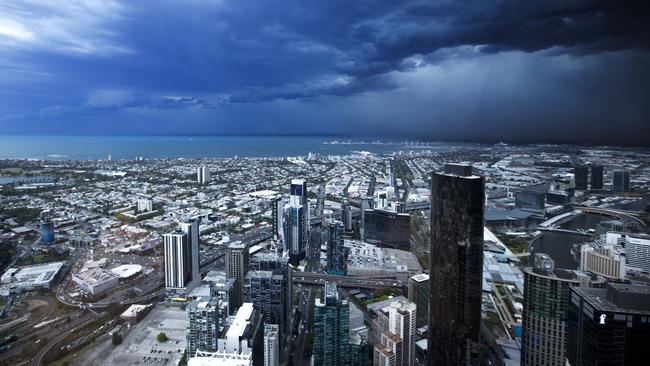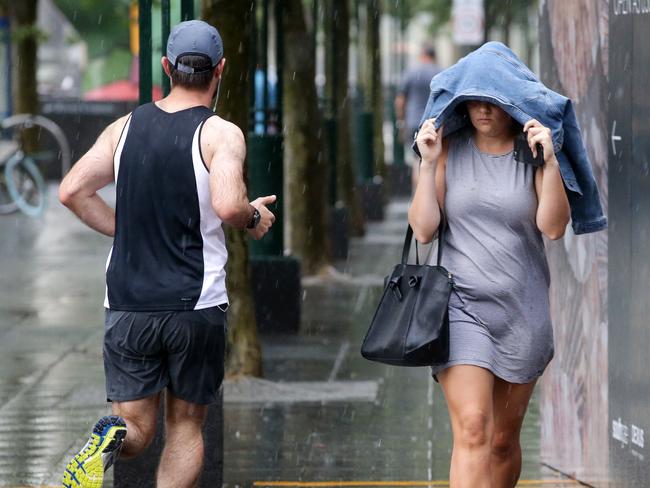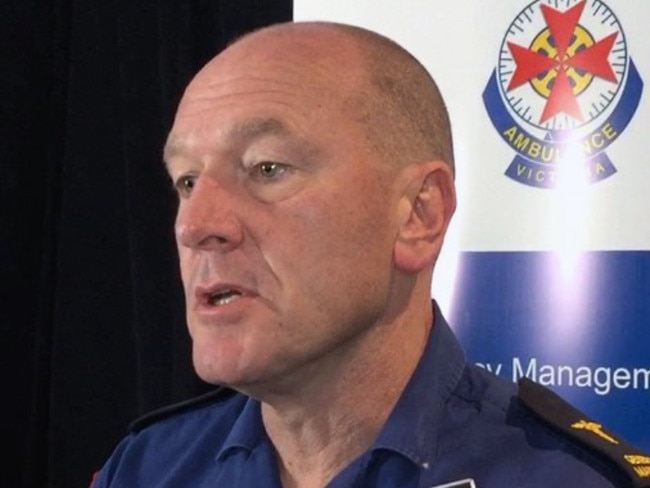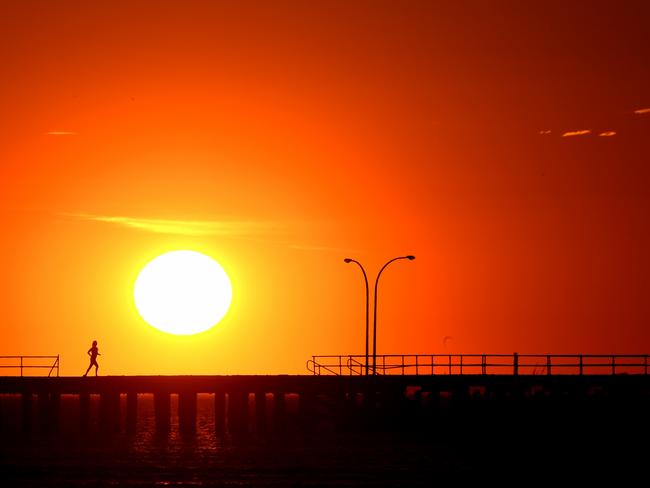‘Thunderstorm asthma’ extremely rare, experts say
WHEN a thunderstorm hit Melbourne yesterday, it triggered a rare phenomenon seen only four times in the last 30 years.

DOORS swung wide open at homes around Melbourne on Monday afternoon in hopes a looming thunderstorm would bring with it a cool change.
It did, but it carried with it something else. The combination of warm weather, a high pollen count and stormy conditions produced what experts call “thunderstorm asthma”, an extremely rare and dangerous phenomenon that saw Victoria run out of ambulances for an entire hour.
Two people died — one after waiting 30 minutes for an ambulance — but a spokesman for Ambulance Victoria said it was unclear whether the deaths “are related to this phenomenon”.
A full investigation will be carried out.
Those who suffered were not prepared. Most said they hadn’t experienced asthma since childhood. They all had one thing in common: Hay fever.
“I’ve never had asthma but do get hay fever, mainly itchy eyes and sneezes, but there were weirdly no other hay fever symptoms (on Monday),” Kate Craig, from Melbourne’s inner west, told news.com.au.
“It hit me all of a sudden about 7.30 last night, I felt like I couldn’t take a full breath and had an awful, chesty, hacking cough. I thought I must have just inhaled some spices while cooking — that’s what it felt like.”

Gary Nunn said he was in transit when he began to have trouble breathing.
“I’d had bad hay fever all day in Melbourne. In the early evening I got to Melbourne Airport and noticed a new symptom: I was struggling to breathe. This had never happened before,” he said.
“It got worse, to the point I was wheezing and finding it hard to catch my breath. It went on for a while so I panicked a bit but then thought, just harden up, it’s just a cough. I slept it off on the plane but still felt odd.”
Dan Rodgers said yesterday was the first time since childhood that he suffered asthma.
“It just surprises you. Many experiencing the same thing may never have had asthma before, so are freaking out ‘cause they don’t know why they can’t breathe.”
He said symptoms were continuing on Tuesday morning. It’s a common story, but before yesterday it was something many Melburnians had never heard about.
So I copped a hefty dose of this "thunderstorm asthma" that everyone in Melbourne's yammering on about, and folks let me tell you... it sux.
— Cam Tyeson (@camtyeson) November 21, 2016
Anyone else cop that thunderstorm asthma hard last night?
— Dan Rodgers (@danwrodgers) November 21, 2016
Not normally asthmatic but #thunderstormasthma hit last night in Melbourne.
— Carl Stevens (@stevens_carl) November 21, 2016
What in the blue hell is thunderstorm asthma?
— Burgo (@FuckBurgo) November 21, 2016
State health commander Paul Holman labelled Monday a “state disaster” and said he had not seen anything like it in 40 years on the job.
“It’s a phenomenon we’ve only seen rarely before ... Within an hour (of the storm hitting) we’d received 160 calls, and had run out of resources. I can only speculate, but I think it was caused by the huge amount of irritants and pollen in the air,” he said.
Ambulance Victoria’s Executive Director of Emergency Operations, Mick Stephenson, said Monday saw an extreme spike in the number of calls.
Within a five-hour period from 6-11pm, there were roughly 1900 triple-0 calls, compared to what would typically be about 345.
“We essentially had a day’s workload within five hours.”

Victorian Health Minister Jill Hennessy said on Tuesday morning the two deaths would be reviewed.
“There’ll no doubt be a full review of what occurred last night and what the clinical outcomes were as a result,” she said.
“No doubt, there will be lessons to learn, there always are in these cases, but every part of our emergency management surge occurred correctly.”
John Weiner has a scientific explanation for the bizarre event. The consultant physician at AllergyNet Australia predicted thunderstorm asthma would strike before it did.
“Perfect conditions for thunderstorm asthma in SE Australia today. Please review your asthma plan,” Dr Weiner tweeted well before the storm hit.
Pollen allergy and asthma/wheezing? Perfect conditions for thunderstorm asthma in SE Australia today. Please review your asthma plan
— Dr John Weiner (@AllergyNet) November 20, 2016
He told news.com.au Monday’s conditions were “the perfect storm” for the 20 per cent of Melburnians who are allergic to pollen. He said such conditions are very rare.
“This is just the fourth major episode of this type in 30 years in Melbourne. It’s been recorded elsewhere in the world but Melbourne is prone because of high pollen counts and prevailing northerly winds.”
He said a city like Sydney is saved because the winds are typically travelling east-to-west and enter from the ocean. He said the amount of pollen in the air on Monday was much higher than usual.
“The amount that you can get at the front of that storm is a half tonne of pollen per hectare that’s dragged down at the front of the storm.”
Dr Weiner said the thunderstorm provides an element that makes a high pollen count particularly dangerous.

“Pollen granules don’t go into the lungs because they’re too big,” he said. “But with moisture (from a thunderstorm) they rupture into up to 700 tiny particles. They go straight into the lungs.”
He said the symptoms are the same as typical asthma but “it’s a dramatic event for people who haven’t had asthma before because it occurs so suddenly.”
A doctor, who did not wish to be named, said staff at a Melbourne hospital worked through the night, some pulling 16-hour shifts.
Dr Weiner said it was important people who suffer from asthma or hay fever consult their GP for an asthma action plan.




